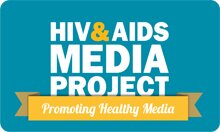HIV & TB: Twin epidemics
Tuberculosis: A notifiable disease
TB is one of 33 notifiable diseases listed on the Department of Health’s website.
A notifiable condition is one which healthcare workers must report the case to the local or provincial health department. This assists the Department of Health in keeping track of the progress of contagious or highly dangerous diseases and events. This is crucial in preventing and controlling serious health threats such as outbreaks.
Because it is a notifiable disease TB is almost always treated at public health facilities so that cases can be monitored and followed-up.
Please see the Department of Health's website for more details on disease notfication.
Tuberculosis (TB) is an infectious disease caused by airborne bacteria spread through droplet infection. This means that when a person coughs, sneezes or even exhales tiny fluid droplets containing the bacteria are ejected into the air.
Most people have been exposed to TB bacteria (latent TB) but their immune system is strong enough to stop it from developing into active TB. But people with untreated HIV develop weakened immune systems which cannot cope with the bacteria.
TB mainly affects the lungs but the disease can travel through the blood stream and into other parts of the body (extra-pulmonary TB). HIV-positive people with low CD4 counts are more likely to have extra-pulmonary TB.
Extra-pulmonary TB can occur in different places throughout the body including the bones and joints, the membranes around the brain and heart and most commonly the lymph glands.
MDR & XDR Tuberculosis
These are strains of TB that have become resistant to one or more TB treatment drugs in either the first line regimen or both the first and second line regimens.
Drug resistant strains of TB happen when people who have active TB do not or cannot take their treatment properly. This is because TB, which is weakened by the TB treatment, gets a break from the drugs and takes the opportunity to grow stronger.
MDR and XDR-TB are contagious like regular TB but the treatment options are far more limited because they are drug resistant.
Drug resistant or multi-drug resistant TB
These strains of TB are resistant to one or more of the first line drugs (isoniazid and rifampicin) in the TB treatment regimen. In this case the patient must start second line treatment.
Extensively drug resistant TB
This is a strain of TB which is not only unaffected by first line TB treatment drugs but also some of the second line drugs.
 Also See JournAIDS' page on TB treatment
Also See JournAIDS' page on TB treatment






